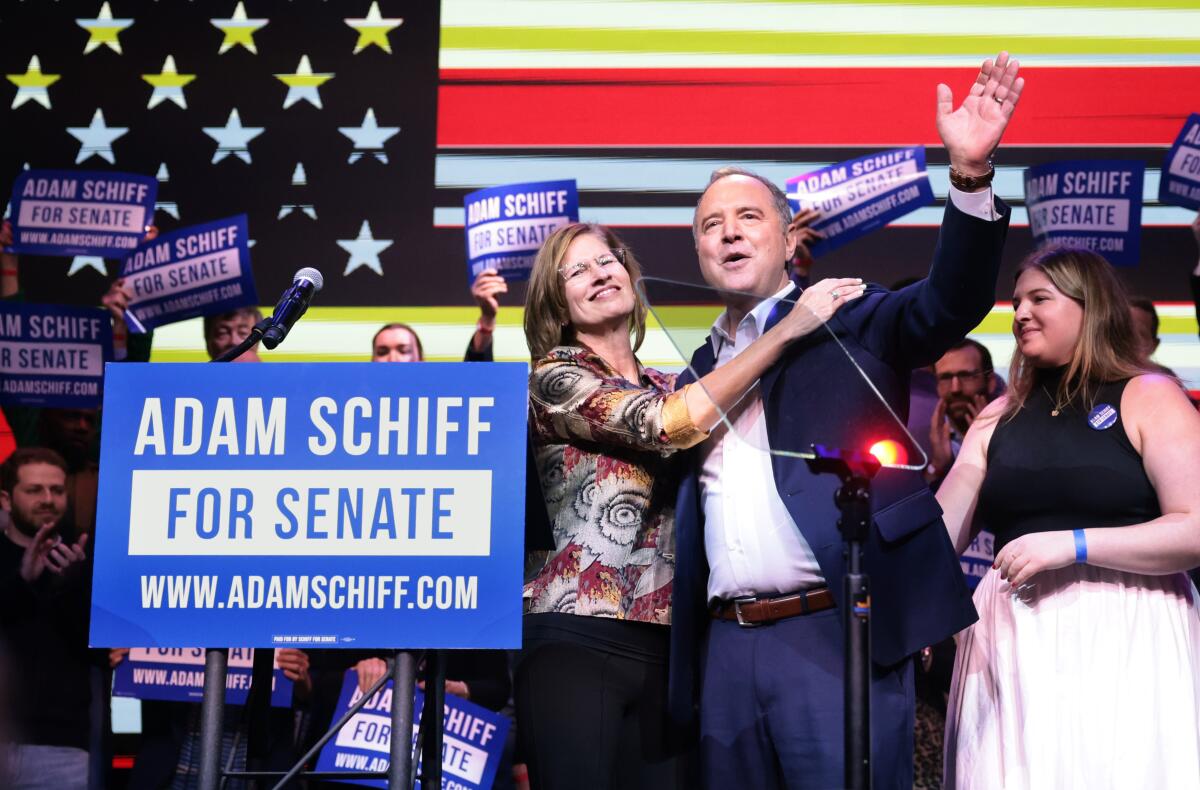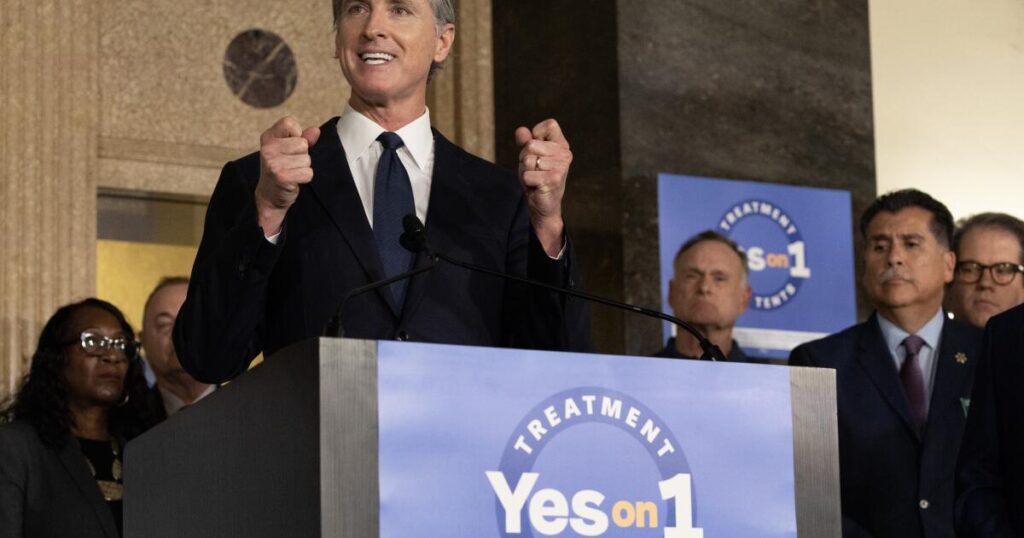Gov. Gavin Newsom should have learned this four years ago: Don't try to persuade voters to increase government spending in a primary.
Especially Sacramento spending.
Newsom's Proposition 1 — a proposal to pump more money into treating homeless people with mental illness, drug addiction or alcohol addiction — may finally pass after the vote count is completed. But as of this writing, it's still very close, with the yes or no votes nearly equal.
Newsom must be shocked.
In January, the cocky governor told Times reporter Taryn Luna in an interview: “I think he's going to win by a landslide. Period. Period.”
Typical Newsom arrogance.
Many politicians were surprised last year when he insisted on putting his proposal forward in the March 5 presidential primary. Primaries are often graveyards for liberal causes.
This is because they usually suffer from low voter turnout. This helps conservative agendas. When turnout is low, the electorate consists of a higher-than-usual percentage of right-leaning voters, including older whites and Republicans.
In this election, the final turnout is likely to be a pathetic 33% of registered voters, says Paul Mitchell, who runs Political Data Inc.
So far, in the ballot counting process, 38% of Republicans have returned mail-in ballots, compared to just 31% of Democrats, Mitchell says. And 51% of voters over 65 returned their ballots, compared to just 13% of those under 35.
Whites represent 67% of those who cast their ballots, although they make up only 55% of registered voters. By contrast, Latino voters make up just 17% of votes cast, even though they make up 28% of those registered.
“When youth turnout goes down, Latino turnout goes down with it. “Latinos are younger,” Mitchell says.
Four years ago, in the March 3 presidential primary, turnout was slightly higher: 47%. But it was not pro-Democrat enough to save a $15 billion school construction bond proposal that was drafted in the Legislature with significant input and support from Newsom. Voters rejected him by six percentage points.
Proposition number — 13 — may have confused voters. Supporters of the measure argue that people feared it would weaken the hallowed 1978 property tax cut initiative, or Proposition 13. And perhaps some did. But the real reason for its failure was that turnout was low and voters objected to the spending.
The measure should have been placed on the general election ballot in November, when turnout was 76%.
In 2008, in the previous presidential primary ballot — on February 5 — voters rejected a measure to spend more money on community colleges.
You'd think Newsom would have understood the lesson.
“Always go to the general election if you're going to ask voters for money,” says Democratic consultant David Townsend, who has run several local bond and tax measures.
“There are voters who are more liberal and they are younger. They have a longer view of life. They want things to be better for themselves. The primaries have a group of older people like you and me.”
Across California on March 5, nearly as many local school bond measures as passed (14) failed, according to the California Taxpayers Association. Some measures are still too close to predict.
Newsom's Proposition 1 included $6.4 billion in bonds. But the cost will double when the interest on borrowing is added. All voters are not stupid. Many are doing the math — and resentful of the many billions California has already spent trying to reduce homelessness.
Proposition 1 funds would finance the construction of 4,350 housing units. There will be new treatment facilities for 6,800 homeless people. Newsom pushed the housing number higher.
Perhaps if the governor had focused more on promoting his confusing ballot measures and less on promoting his national political profile, Proposition 1 would have fared better. But essentially, the proposal performed worse than expected because it was placed on the wrong ballot — despite Newsom raising more than $20 million for the campaign and opponents spending almost nothing.
Good day for moderate Democrats

Rep. Adam Schiff (D-Burbank) celebrates with his wife during an election night party in Los Angeles as he seeks to replace Sen. Dianne Feinstein in the U.S. Senate.
(Wally Scalig/Los Angeles Times)
It was a bad day for many Sacramento politicians, especially liberals. At least 10 lawmakers seeking another office appear to have failed.
Several moderate legislative candidates have done well. But the next legislature elected in November will remain dominated by the Liberals.
“On the whole, it was a very good night for the moderate side,” says Marty Wilson, chief political strategist at the state Chamber of Commerce. “It was a strong performance by business-backed Democrats.”
In the US Senate race, the more moderate candidate – Democratic Representative Adam B. Schiff of Burbank — easily over two liberal Democrats, Reps. Katie Porter of Irvine and Barbara Lee of Oakland.
But I suspect Schiff's victory is mainly due to his established name as the leading anti-Trump crusader in the House.
Likewise, Republican Steve Garvey finished in the top two — qualifying for the November ballot — because of the fame he gained by being a former star ballplayer for the Los Angeles Dodgers and San Diego Padres.
Schiff's satirical TV ads that boosted Garvey among Republican voters were probably never needed to ensure that Porter would not become his challenger in November. It could have come out cleaner.
Porter ran a poor campaign, emphasizing issues that low-turnout voters did not like, and attacking corporate corruption in politics. Unaffected voters might have asked: yeah, what else is new?
Lee was the most impressive candidate to me. She handled herself well and stuck to her principles, even if they were too liberal, even for California. No senator who supports a $50 national minimum wage will be elected.
However, there must be a way to count votes faster, even while confirming their legitimacy.
